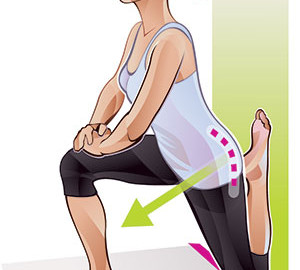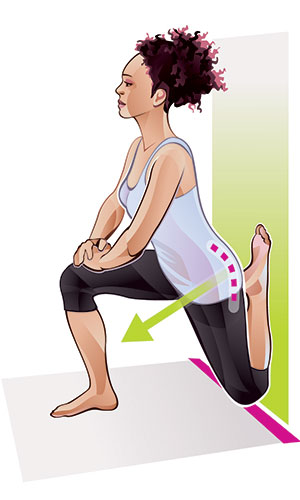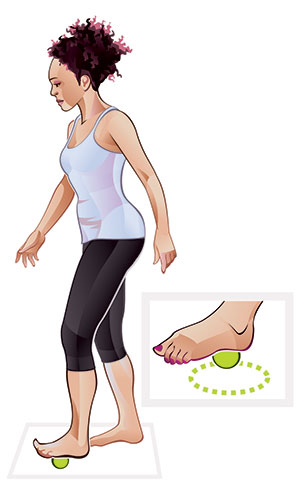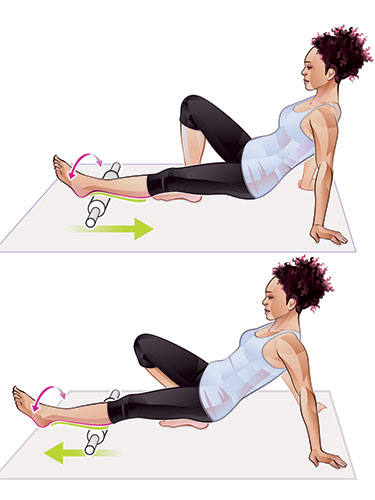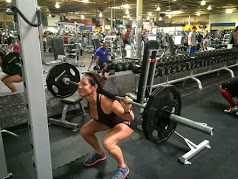Hi Fit Friends, hope this article finds you!
I found this great article on fun energetic ideas of exercise outside and why it is better then always being in the gym.. Please also join me in BOOT CAMP. CLICK ON MY BOOT CAMP LINK FOR MORE INFORMATION.
Enjoy all the perks — and avoid the pitfalls — of exercising outdoors this summer.
Summer is finally here, and with it come countless opportunities to get moving in the great outdoors.
While you may not want to give up your gym and studio workouts entirely, you might want to consider squeezing in some activity en plein air whenever you can.
The world is your playground, and the range of fun and surprising workouts is nearly endless. They’re effective, too: Your outdoor excursions can offer strength-building, fat-burning, balance-refining boons — among plenty of other health benefits.
“Humans want and need to be near the natural world,” says trainer Tina Vindum, author of Outdoor Fitness and the accompanying website and training program focused on fresh-air workouts.
Air quality is generally two to five times better outdoors than in, says Vindum. Natural, outdoor light provides essential vitamin D, enhances mood, improves sleep, and alleviates symptoms associated with seasonal affective disorder (for more on that, see “Here Comes the Sun”).
The uneven terrain also provides novel — and beneficial — stimulus to the nervous system, notes Life Time Alpha Training instructor Devon Bates, NASM-CPT, USAW, who teaches outdoor exercise classes in Columbia, Md.
“When you’re jogging, running, or cycling outdoors, the changing sights, sounds, and landscape send signals to the brain that running on a treadmill or cycling in a studio simply cannot duplicate,” says Bates.
Subjective tests also indicate that outdoor exercisers receive a bigger boost in vitality, enthusiasm, pleasure, and self-esteem (and a greater reduction in tension,depression, and fatigue) than those who solely work out indoors.
According to the Environmental Protection Agency, many of us spend as much as 90 percent of our lives indoors. Temperature, sound, light, and textures are all controlled indoors — and the result can be a body- and mind-numbing experience.
“When all the sensory stimulation you receive from the environment is the same, parts of your brain go to sleep,” says Frank Forencich, author of Beautiful Practiceand founder of Exuberant Animal. “The body isn’t as intelligent as it could be.”
Outdoor activity helps acclimate your body to the unique temperature, terrain, and weather conditions where you live, explains Forencich. “You actually start to inhabit your habitat.”
Ready to head out? These destination ideas, safety factors, and creative exercises will help you make the most of your outdoor workouts this summer.
STAKE OUT YOUR TERRITORY
The first step to outdoor workouts is figuring out where to do them. When you have easy access to woods, water, or a well-maintained running trail, it’s a no-brainer. Urban dwellers may have a tougher time. Where green space is limited, you may need to wander farther afield to find an appropriate exercise spot.
Your workout location will go a long way toward determining the type of workout you’ll have, says Vindum. The first option, good for city and country dwellers alike, is (1) the single-site workout: Grab the equipment you need, drive or carry it to a yard, field, running trail, or other green space, and go crazy.
Another option is (2) the traveling workout, in which you cover territory throughout your session: Run one block, do 15 pushups; run another block, do 20 squats; run a third, hold plank pose for 30 seconds. Repeat for anywhere from 10 minutes to an hour, sprinkling in body-weight moves of your choice between brief periods of running.
(3) The destination workout is broken up into three segments. “You run to the exercise space — a beach, say — at an easy pace,” says Vindum. “Then you perform body-weight strength drills at the location. Finally, you perform a ‘movingmeditation’ on your way home,” breathing easily to get centered and clear your mind as you walk or jog slowly back to your starting point.
Can’t think of any appealing spots near you? Don’t give up, says Vindum. “Nearly every city, no matter how densely populated, has green spaces tucked away. (4)Look at a map of your surroundings to find them.”
In addition to finding a place for a great workout, identifying those workout spots will also help you get to know your neighborhood more intimately. Nothing showing up in your vicinity? (5) Google “parks” in your area for more options. Even if no officially designated parks or green spaces come up, you may still stumble on potential workout spots simply by striking out on foot (or bike, skateboard, or in-line skates).
Some cities have even installed (6) adult jungle gyms with suggested workout ideas along trails and waterfronts.
If there’s water nearby, (7) swimming, kayaking, and stand-up paddleboardingare great options.
(8) Uneven surfaces — hills, hiking trails, beaches with rocky terrain — add an extra challenge.
RESPECT YOUR HABITAT
Too much time in climate- and security-controlled environments coaxes us into a state of mental and physical autopilot. Outdoors, irregularities and hazards abound.
To stay on the right side of them, says Forencich, (9) tune in to your environmentand be aware of your surroundings. “Remember the leopards,” he advises. “Back in Paleo times, the wilderness was a predator-rich environment, and inattention was potentially fatal.” These days, you may not be in much danger of becoming a big cat’s dinner, but there are still plenty of bees, ticks, spiders, snakes, and biting insects out in the wild.
(10) Learn the particular natural dangers of the area you’re traversing (there is usually posted signage if large animals have been seen in the area), (11) stay on paths, and don’t poke around stones, tree roots, or small caves, where, depending on your geographical area, you may happen upon something venomous.
During tick season, (12) check yourself for hitchhikers after your workout, especially on your ankles and lower body.
More likely than a run-in with a dangerous creature is a close encounter with gravity: “We’re not accustomed to moving on uneven ground,” says Vindum. (13)Avoid spills by staying fully engaged. “When you’re running outdoors, keep your toes up and look at the ground 10 to 15 feet in front of you rather than straight down,” she says. That builds sensitivity in your feet that allows you to easily run past, or over, obstacles without having to stare at the ground the whole time.
When running, hiking, or walking along busy roads, (14) “face traffic,” says Bates. “Don’t depend on drivers to be vigilant.” Evenings and early mornings, he advises,(15) “wear bright or reflective clothing,” for maximum visibility. And if you work out alone, (16) always let someone know where you’re going and how long you plan to be gone.
Another common danger is dehydration. If you’re not positive that water is available at your destination, (17) drink plenty before you set out and carry a full bottle with you, especially in hot weather. Drink according to thirst throughout your workout, and stick to water (rather than sports drinks) for sessions of 60 minutes or less. If you work out for longer, pack a piece of fruit or a sports gel.
Forencich recommends making the outdoors your sanctuary, and keeping it free of everyday distractions. (18) Converse with the outdoors, not people on the phone, he advises: “If you’re talking about work, gossip, or the news while out on a hike,” he says, “you’re not getting the full benefits of the experience. (19) Better yet, leave your phone in the car,” he suggests. Want your phone because you’re worried about getting lost sans GPS? At least turn it off so you’re not tempted to tweet (#completelyunplugged) while trying to commune with nature.
Taking that advice one step further, Vindum suggests you (20) ditch your earbuds: Instead of blasting your tunes, “exercise in silence, and take in the smells and sounds that are all around you.”
Want to celebrate your all-natural primitive exercise experience? If your nose starts running, (21) try “the farmer’s blow.” Just plug one nostril and blow straight down. This method of clearing your sinuses without the aid of tissue paper (while arguably gross) is acceptable as long as you’re aware of who’s around you, says Vindum: “You just don’t want to hit someone with that stuff — it’s a flying biohazard!”
TAKE IN THE ELEMENTS
Perhaps the biggest reason people exercise indoors is to avoid the elements. In inclement weather, staying indoors may be advisable.
But aside from heatstroke or hypothermia-inducing temps, a certain amount of(22) temperature variation can be good for you, says Forencich. Indoor heat and air conditioning, he points out, deprive our bodies of contrast. “We don’t shiver and we don’t sweat, which means we don’t burn as many calories throughout the year,” he says. “So go outside, get cold, get hot. As long as you avoid the truly life-threatening extremes, your body will benefit.”
(23) Outdoor light benefits you in ways that your office fluorescents don’t. Both blue light (predominant during morning hours) and red light (strongest in the evening) can help with sleep regulation.
One other type of exposure you want to be moderate about is (24) running barefoot. It’s fun but can lead to injury, says Forencich: “If you’ve worn shoes your whole life, you’re not going to regain the foot strength and sensitivity of a Paleo hunter-gatherer in one afternoon.” While barefoot walks on a forgiving surface like sand or grass can give your feet a nice break from shoes, running barefoot for long periods — on any surface — can be problematic, he says.
NATURE’S GYM
Once you’ve decided on a time and place to release your inner Tarzan or Jane, the next step is to figure out what you’ll do once you get there. In most cases, all you’ll need is your body and a bit of creativity to make the most of what’s available in your surroundings.
(25) Go freestyle. “Seek out experiences you can’t have indoors. And feel free to let loose a little,” Bates says.
If there’s a (26) cool rock near your workout space, stand on it, lift it, place a foot on it, and do lunges. If there’s a steep incline, (27) scramble up as fast as you can a few times. If there are fallen leaves, (28) play “nature’s hopscotch” and leap from one to the next, suggests Forencich.
Another fresh idea: Take advantage of the open space and base your entire workout on different (29) forms of locomotion like jumping, skipping, leaping, and hopping for the lower body, or crab-walking and climbing for the upper body.
Focus on (30) traveling in all directions: forward, backward, diagonally, to the side, and rotationally.
One of Vindum’s favorite outdoor options is the Tree Workout: “Find a sturdy tree and do everything you can think of near it or on it.” For example, (31) do a 90-second tree-wall sit: Put your back against it, and bend your knees and hips to 90 degrees. (32) Or try self-assisted pull-ups, looping both hands over a high branch and bracing a foot on the trunk. Advanced exercisers can kick up to a (33)handstand against the tree and hold the position, or even do handstand pushups.
(34) Walk across a log to work on balance. Experiment with deadlifting, overhead pressing, or swinging a fallen tree branch or other natural objects you stumble upon.
While a heart-rate monitor can be handy initially for gauging your effort level with unfamiliar activities, it’s best to switch over to your internal monitoring systems as soon as you can.
(35) “Let sweating and heavy breathing be your guide,” suggests Forencich. Feel the intense pleasure that comes with graceful, powerful movement, he says. “The motivation is in the movement itself.”
TOP MOVES FOR OUTDOOR EXERCISING
(36) Body-weight moves like squats, get-ups, burpees, lunges, and pull-ups (on tree branches or monkey bars) work just as well outside the gym as in, and have the added benefit of working on uneven surfaces and asymmetry — which challenges balance and core control. For another challenge, (37) try pushups with your feet on a hill incline. Perform squats while facing downhill for a deep stretch.
(38) Sprinting as fast as you can is the ultimate outdoor activity. It builds lower-body strength and cardiovascular fitness. Pace off a distance of 100 yards or more and perform repeated 100- to 300-yard sprints. Walk slowly back to the start (this is your rest) and repeat.
(39) Hill runs and (40) stadium-step dashes are great for advanced exercisers looking for a tough challenge. Sprint up, walk down — and watch your step.
(41) Fartlek (or “speed play”) is when you vary your speed to walk, jog, run, or sprint through whatever terrain is available — a trail, suburban sidewalk, or mountain path — for a set period (say, 10 minutes).
(42) Bear crawls (face down, traveling on hands and feet) and (43) crab walks(same concept, but face up) are great ways to work both your upper and lower body.
Think back to (44) your favorite childhood games. Play tag, Simon Says, or Red Rover.
(45) Join a summer rec league or start your own softball, dodgeball, kickball, or volleyball team.
Grab a couple of friends for a few rounds of (46) Double Dutch. Jumping ropebuilds agility and improves conditioning. Or play (47) hoop toss. This three-person game requires a ball and a hoop. One person roams while holding the hoop as the other two toss the ball between them, passing it through the hoop each time.
Plan out repeatable (48) agility drills and run between trees, park benches, lampposts, or other obvious place markers. Plan a sequence that takes about 10 seconds (for explosive power) or 30 seconds (for endurance and strength), and repeat.
(49) Obstacle courses offer combined agility, strength, and speed training by requiring crawling, climbing, and sprinting. Leap rocks, traverse monkey bars or fallen logs, crawl beneath low branches, scale trees. Repeat several times or play(50) Follow the Leader with a training partner, working on efficiency and form with each repetition.
There you have it: 50 tips for making the most of summer without sacrificing your fitness or fun. So, what are you waiting for?
I FOUND THIS ARTICLE FROM BELOW ADDRESS
https://experiencelife.com/article/50-tips-for-taking-fitness-outside/



